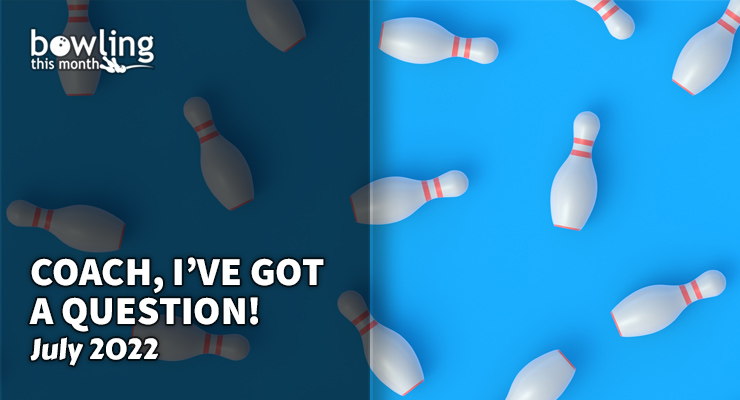In this recurring feature, I’ll be answering questions from Bowling This Month readers, or questions I’ve received from bowlers I work with, that might not require the depth of a full-length article, but that can definitely benefit more than just the person who happened to ask. Think of it as a Dear Abby column for bowlers.
If you have questions, please leave them in the comment section below so that I can address them in a future article. Please note that I can only answer a few questions each time, so if your question is not answered this month, please be patient and I’ll be sure to address it in a future installment of Coach, I’ve Got a Question!
Can you explain the difference between a symmetrical core and an asymmetrical core? Do they play differently on the lanes? Also can you define some of the terms that are used when balls are reviewed?
There’s a lot to unpack here. Before I answer the initial questions about core symmetry and ball reaction, lets look at some of the terms in need of definition. I’ll first mention that our main bowling ball reviews page has a section that covers the current ball testing process. That includes information on the oil patterns, layouts, and definitions of all the terms used.
For simplicity’s sake, I’m going to give some non-technical definitions to the core number terms that you can hopefully apply:
- RG stands for radius of gyration. Think of RG as a measure of how easily or how fast a core spins. Lower RG numbers, such as 2.46″, spin faster than higher numbers, such as 2.57″. Low RG balls want to “rev up” sooner and are generally associated with earlier hook than higher RG balls.
- Diff is short for differential. Without getting too technical, think of differential as a measure of the flare potential of a ball. Anything in the 0.050″ range and up has a lot of flare potential and will generally have more hook potential than balls with lower differential numbers, all other things equal.
- Intermediate diff is a measure of the ball’s asymmetry: the higher the intermediate differential, the more asymmetrical the ball is. Asymmetrical balls tend to be paired with low to medium RGs, higher differentials, and aggressive coverstocks at the top end of a manufacturer’s lineup.
These three specs form the basis for determining the strength of a ball’s core. Essentially, they help to give you an idea of what the “engine” of ...
This article is only available to Bowling This Month subscribers. Click below to get instant access to this article and all of our other premium instructional content.
Subscribe to Bowling This Month
Already a Bowling This Month subscriber? Click here to log in.
Image Credits: Bowling pins illustration (©iStock.com/OlekStock) is licensed for use by BTM and is the copyrighted property of its original creator.
